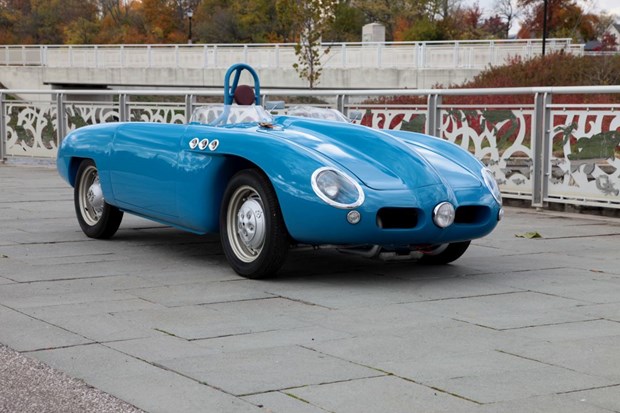
Carmaker, inventor, visionary and painter: Lucien Rosengart was everything in one. The story of an industrialist with 1,000 projects.
Born in Paris in 1881, Lucien Rosengart soon showed a keen interest in technology and innovation. In 1893, he obtained a CAP in mechanics and a few years later opened a workshop in Belleville where he made screws, nuts and washers. Anecdotally, he invented a stainless steel wood screw that was widely used during the construction of the Paris metro system, making his fortune. During the First World War, he opened two factories making shell fuses. It was then that he met André Citroën, whose business was disrupted due to financial problems. Rosengart came to Citroën's rescue by creating a financial organisation to save the company: Société Auxiliaire de l'Industrie Française (SADI).

The road to independence
In 1923, while deputy director at Citroën, Lucien Rosengart was poached by Robert Peugeot, who wanted his help to turn around the struggling family business. Given full powers, he set about turning Peugeot's fortunes around, but his fortunes varied as a result of risky and costly operations. These included the creation of Peugeot Maritime, which manufactured motorboats in Levallois-Perret, an initiative that was not a success. He was eventually ousted in 1927 when Jean-Pierre Peugeot took control of his company. That same year, he bought the former Bellanger car factory in Neuilly to set up his own business in the automotive industry. He decided to assemble Austin Seven cars under licence.

Cars under licence
With the help of Jules Salomon, with whom he had worked during his time at Citroën and Peugeot, Rosengart developed a derivative of the little English car: the LR2. The Société Rosengart was created the following year, with a rose as its coat of arms. The duo set about democratising motoring by creating cars derived from the Austin Seven (LR2 and LR4), which were simple (750cc 4-cylinder engine), compact and light (670kg). Rosengart also acquired the licence for the Adler Trumpf and Adler Junior, and developed the Supertraction, a car with a Citroën Traction engine. In the mid-1930s, the French manufacturer ran into financial difficulties due to too many models in its range, not all of which sold well. He avoided bankruptcy thanks to a series of financial entries and founded a new company, Société Industrielle de l'Ouest Parisien (SIOP), which succeeded SA Rosengart in 1936.
The wind shifts
With up to 6,000 employees, the company lost one of its factories during the bombing raids and stopped building cars during the Second World War, content to contribute to the war effort. In 1942, Lucien Rosengart left France because of his Jewish origins and took refuge in the United States. After the war, he returned to France and felt the tide turning for his brand. He withdrew financially from the business, but continued to oversee the launch of Rosengart Super 5. The small brand continued to survive without its creator, with models such as the Rosengart Supertrahuit and the Ariette. SIOP went bankrupt in 1952, but Rosengart survived for another three years. After trying to launch the Sagaie, an Ariette with a flat-twin engine, Rosengart closed for good in 1955.

130 patents
For his part, Lucien Rosengart has completely lost interest in cars. Having sold his shares in SIOP and the right to use his name as a trademark, he devoted himself to naive painting and lived in the south of France. He is credited with a number of inventions, including the seatbelt, the stainless steel bolt, bicycle lighting, the first outboard motor and even table football, although the authorship of the latter is disputed. During his lifetime, he registered 130 patents, founded the Paris Boat Show in 1926 and organised the Florio Cup competitions in Saint-Brieuc. This versatile genius died in 1976 at his home in Nice.



















